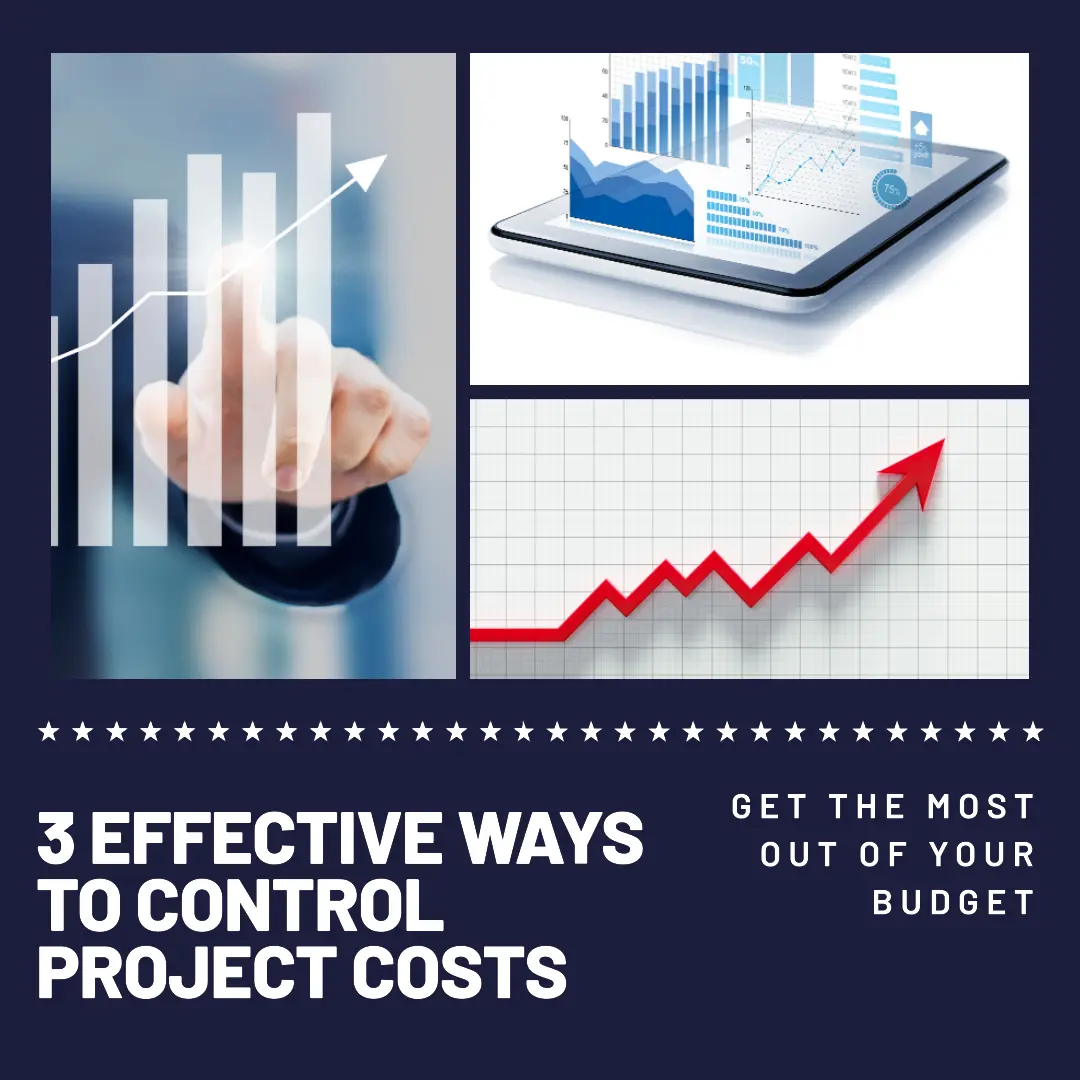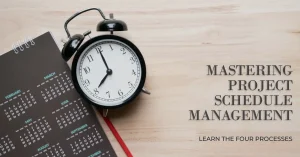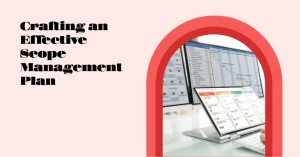To find out how Artificial Intelligence is changing the Project Management landscape, you may enjoy reading this article https://www.shaunstoltz.com/did-artificial-intelligence-just-change-everything-about-project-management/
I. Introduction
As a project manager, I’ve always believed that keeping project costs under control is one of the most crucial elements of successful project management. After all, we’re all too familiar with the dreaded “scope creep” and budget overruns that can throw a project into disarray. Controlling costs is essential not only to the success of the project itself but also to the overall health of your organization. That’s why I’m excited to share with you three proven ways to effectively control project costs.
In this blog post, we’ll explore the importance of setting a realistic budget, the value of monitoring costs regularly, and the benefits of implementing cost-saving measures. I’ll also share some practical tips and insights I’ve gathered over the years on how to apply these methods in your projects. By implementing these strategies, you’ll be better equipped to keep your projects within budget and deliver the desired outcomes without breaking the bank. So let’s dive in and explore these three cost-control techniques!
II. Setting a Realistic Budget
I can’t emphasize enough how crucial accurate budgeting is in project management. In my experience, a well-prepared budget lays the foundation for success, ensuring that the project has the resources it needs to meet its objectives. On the other hand, an inaccurate budget can lead to a host of problems like cost overruns, delayed schedules, and even project failure.
A. Common Pitfalls in Budgeting and How to Avoid Them
- Over-optimism: Let’s face it, we all want to believe that everything will go smoothly, and our projects will be completed without a hitch. However, this mindset can lead to overly optimistic budgets that don’t account for unexpected challenges. To avoid this pitfall, it’s crucial to remain objective and consider all possible risks and scenarios when setting your budget.
- Not accounting for risks and contingencies: Speaking of risks, they’re an unavoidable part of any project. To set a realistic budget, it’s essential to include a contingency fund to cover unexpected expenses. This way, when surprises arise, you’ll have a financial cushion to fall back on.
- Lack of stakeholder input: Budgeting is not a one-person job. To create a comprehensive and accurate budget, involve team members and stakeholders who can provide valuable insights and expertise. Their input will help you identify potential cost drivers and make more informed decisions.
B. Tips for Creating a Realistic Budget
- Gather historical data: Look at past projects similar to the one you’re planning. Analyzing historical data can provide valuable insights into what worked and what didn’t, allowing you to make more accurate cost projections.
- Include input from team members and stakeholders: As I mentioned earlier, it’s essential to involve relevant stakeholders in the budgeting process. This will help ensure that all potential costs are considered and that the budget reflects the collective wisdom of the team.
- Use a top-down and bottom-up approach: By combining both top-down (starting with the overall project goal and breaking it down into smaller components) and bottom-up (estimating costs for individual tasks and rolling them up to the project level) approaches, you can create a more accurate and comprehensive budget.
- Account for risks and contingencies: Don’t forget to include a contingency fund in your budget. Allocate a percentage of the total budget to cover unexpected costs, and be prepared to adjust your budget as new risks and opportunities arise.
By setting a realistic budget from the outset, you’ll be better equipped to manage your project costs effectively and navigate the challenges that inevitably come your way. Remember, a solid budget is the foundation of successful cost control – and ultimately, a successful project.
III. Monitoring Costs Regularly
In my years as a project manager, I’ve found that one of the most critical aspects of controlling project costs is keeping a close eye on them throughout the project’s lifecycle. Regularly monitoring costs not only helps identify potential issues early on but also keeps the project on track and ensures that it stays within budget.
A. The Importance of Tracking Project Costs
Consistent cost tracking allows you to detect any deviations from the budget and take corrective action before they snowball into significant problems. By proactively addressing potential cost overruns, you’ll be in a better position to deliver your project on time and within budget.
B. Tips for Effective Cost Monitoring
- Establish a project cost tracking system: Having a systematic approach to monitoring costs is essential. Develop a system that tracks expenses in real-time, making it easy to compare actual costs with the budgeted amounts.
- Assign responsibility for tracking costs to specific team members: Delegate the task of monitoring costs to team members who have a thorough understanding of the project’s financial aspects. This will help ensure that costs are tracked accurately and consistently.
- Use project management software: Today’s project management software solutions offer robust tools for tracking costs and analyzing financial data. Utilize these tools to stay on top of your project’s financial health and make data-driven decisions.
- Set up regular progress meetings to discuss costs: Schedule regular meetings with your team to review costs and address any concerns. These meetings provide an opportunity to identify potential issues, discuss solutions, and keep everyone informed about the project’s financial status.
- Implement a change control process to manage cost changes: Changes are inevitable in any project, but it’s essential to manage them carefully to prevent cost overruns. Establish a formal change control process that requires approval for changes that impact the project’s budget, and ensure that these changes are documented and communicated to all stakeholders.
By monitoring costs regularly and proactively addressing potential issues, you’ll be well on your way to controlling project costs and steering your project towards a successful outcome. Remember, staying vigilant and responsive to cost fluctuations is key to keeping your project on track and within budget.
IV. Implementing Cost-Saving Measures
Over the years, I’ve learned that the most successful project managers are those who are always on the lookout for opportunities to save costs without compromising the project’s quality. Implementing cost-saving measures is not only beneficial for staying within budget but can also lead to improved efficiency and increased overall project value.
A. The Importance of Cost-Saving Measures in Project Management
By actively seeking and implementing cost-saving measures, you can significantly impact your project’s bottom line. These measures often result in more efficient use of resources, streamlined processes, and ultimately, a more successful project outcome.
B. Different Cost-Saving Measures You Can Implement
- Resource optimization: Look for ways to make the most of your available resources. This could mean reallocating resources to tasks that deliver the most value, reducing idle time, or cross-training team members to perform multiple roles.
- Process improvement: Identify and eliminate inefficiencies in your project’s processes. This could involve reducing redundant tasks, improving communication, or implementing lean project management principles.
- Negotiating with suppliers: As a project manager, you can often save costs by negotiating with suppliers for better prices, payment terms, or discounts. Building strong relationships with your suppliers can lead to long-term cost savings and collaboration.
- Utilizing technology to streamline processes: Embrace technology solutions that can automate repetitive tasks, enhance collaboration, or improve the overall efficiency of your project management processes.
C. Tips for Successfully Implementing Cost-Saving Measures
- Identify and prioritize potential cost-saving opportunities: Start by reviewing your project and identifying areas where cost-saving measures can be implemented. Prioritize these opportunities based on their potential impact on the project’s bottom line and overall value.
- Communicate the importance of cost-saving measures to the team: Share your cost-saving goals with your team and explain why they’re essential to the project’s success. Encourage your team members to contribute their own ideas and suggestions for cost-saving measures.
- Monitor the effectiveness of implemented measures: Once you’ve put cost-saving measures in place, track their impact on your project’s costs and overall efficiency. This will help you determine which measures are working and where further adjustments may be needed.
- Adjust strategies as needed based on results: Be prepared to adapt and fine-tune your cost-saving measures as you learn what works best for your project. Stay flexible and open to new ideas that can further improve your project’s cost management.
By implementing cost-saving measures and continuously looking for opportunities to optimize your project’s resources and processes, you’ll be well on your way to controlling costs and maximizing the value of your project. After all, a project that delivers exceptional results without breaking the bank is a true mark of success.
V. Conclusion
As we wrap up our exploration of these three effective ways to control project costs, I hope you’ve found some valuable insights and practical tips that you can apply to your own projects. By setting a realistic budget, monitoring costs regularly, and implementing cost-saving measures, you’ll be better equipped to keep your projects within budget and achieve successful outcomes.
As a project manager, it’s essential to take a proactive approach to cost management. Staying vigilant and responsive to cost fluctuations, while actively seeking opportunities for improvement, will put you in a strong position to deliver projects that not only meet their objectives but also provide great value to your organization.
So, as you embark on your next project, keep these strategies in mind and take control of your project costs. With dedication and focus, you can lead your team to deliver exceptional results without breaking the bank. Here’s to your success in managing project costs and driving outstanding project outcomes!
Find out more about Shaun Stoltz https://www.shaunstoltz.com/about/
This post was written by an AI and reviewed/edited by a human.



